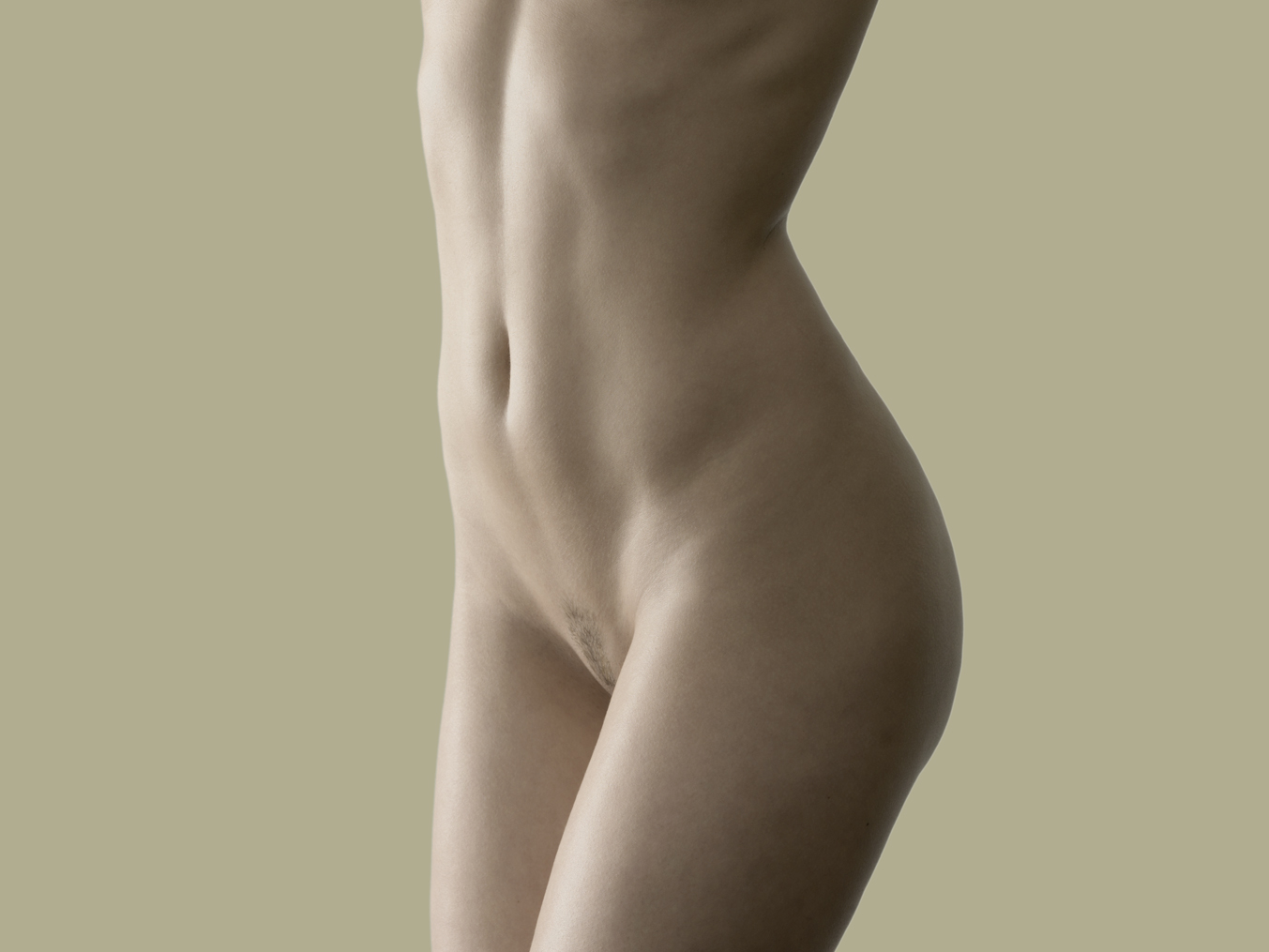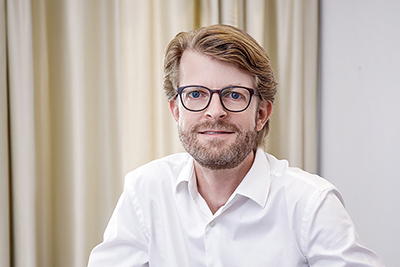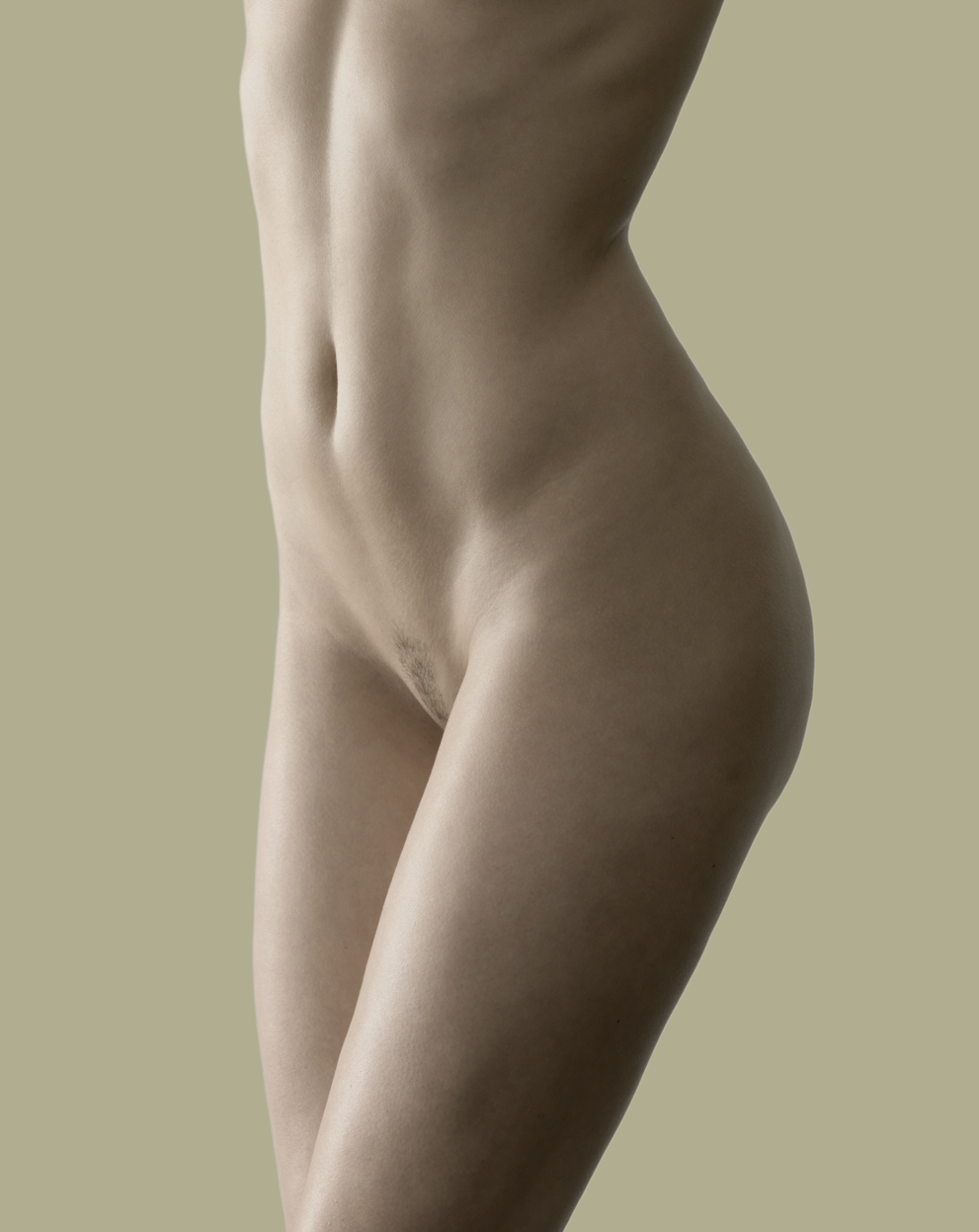
A body lift is used to improve the body contour by a correction of the entire body circumference. The lower body lift involves circular tightening of the tummy, hips and buttocks, in some cases including the thighs. A body lift is not simply a combination of several skin tightening operations, but rather a comprehensive treatment concept. A lower body lift involves contouring the entire lower body in a single operation, improving the fit of the clothing and facilitating the choice of clothes.

Considerations
When to consider a lower body lift:
- You have excess or loose skin on the tummy, hips, buttocks and thighs.
- After losing a substantial amount of weight, there remain unattractive fat deposits and folds of skin on the tummy, hips, buttocks and thighs.
- You have pronounced stretch marks on your tummy, hips, buttocks and thighs.
- You are willing to accept long scars in order to achieve a better contour and firmer skin of the tummy, hips, buttocks and thighs.
- Your well-being and self-esteem are negatively affected by the changes on the tummy, hips, buttocks and thighs.
A lower body lift involves the removal of excess skin and fat on the lower body, including the tummy, hips, buttocks and potentially the thights that cannot be eliminated by other means. It is possible to perform the operation at any age, as long as there are no serious underlying medical conditions that might increase the risk of surgery. The prerequisite for a lower body lift is a stable body weight, as strong weight fluctuations may affect the surgical outcome. A desired pregnancy or planned weight loss should be considered before a lower body lift. Severe obesity may be a contraindication for a lower body lift, increasing the risk of surgery and significantly affecting the expected result. A lower body lift is not a suitable method for weight loss, although several kilograms of skin and fat can be removed.
Consultation
A prerequisite to a successful operation is careful planning. This starts with a personal consultation at the AARE KLINIK.
- Communication of wishes and expectations ascertain what you would like to improve.
- Explanation of the possibilities, scope and limitations of the operation.
Examination:
- Medical history is taken.
- The lower body is examined and digital photos are taken.
- The strength and elasticity of the skin, the amount of excess skin and the thickness of the fatty tissue on the tummy, hips, buttocks and thighs are determined.
- If a tummy tuck is performed, the strength of the abdominal muscles is checked.
- The abdomen is examined for any weaknesses and protrusions (hernia) and the presence of increased fatty tissue in the abdominal cavity, as this could complicate surgery or affect the surgical result.
- Individual factors and personal wishes help in jointly deciding the choice of the appropriate surgical technique, the position of incisions and the resulting scars.
- In addition to lifting the tummy, hip, buttock and thigh skin the surgery may include in addition liposuction, lipofilling, gluteal augmentation with silicone implants (gluteal augmentatioin), autologous fat injection (lipomodelling), or dermofat flaps from the buttocks (autoaugmentation).
- All risks and possible complications of surgery will be discussed with you.
- Based on this, an individual treatment plan is drawn up and goals of the operation are discussed and defined.
- Risks and possible complications are discussed and documented.
To plan the operation and to make a risk assessment we require:
- Full medical history (pre-existing conditions and previous surgery).
- Current diseases (high blood pressure, diabetes, thyroid dysfunction, etc.).
- Allergies or aversion to medications.
- Any important medical reports (please bring any important medical information).
- If you are intending to lose a significant amount of weight to get pregnant, this should be considered when planning an upper body lift.
- It may be advisable to wait for the stabilisation of your weight or after pregnancy before surgery is undertaken.
Procedure
Individual factors and personal preferences determine the choice of the operation method. The operation begins at the buttocks and hips and continues with the treatment of the tummy and thighs. In general, circumferential lower body tightening procedures can be performed as a ‘classic” body lift procedure, with tightening of the buttocks, hips and thighs or as a ‘belt lipectomy’ with belt-like tightening of the buttocks, hips and tummy. However, several modifications are optional to address individual problems. A ‘classic’ body lift may be supplemented by a tummy tuck without (‘mini’-abdominoplasty) or with transposition of the navel (full abdominoplasty).
In a ‘classic’ body lift procedure, skin incisions start from the back, following the upper contour of the buttocks, over the hips to the inner thighs. In a ‘belt lipectomy’, the incisions extend from the back over the buttocks and hips to the lower abdomen. The incisions are positioned so that the resulting scars can be concealed beneath clothing and follow natural skin lines. The exact position of the scar varies between individuals and depends on the preferred style of dress and personal preferences. The incisions are fixed by layered suturing techniques in order to achieve an optimal and lasting tightening effect.
Loose and redundant skin and excess fatty tissue is excised, predominantly from areas below the skin incisions, but partly also from above. Lifting of the skin envelope is often combined with the excision or suctioning of excess adipose tissue to achieve an optimal contour. Missing tissue volume of the buttocks, as may result after massive weight loss, can be replaced in part by shifting excess tissue (dermofat flaps) from the buttocks (autoaugmentation) or using silicone implants (gluteal augmentatioin). Volume enhancement of the buttocks can also be obtained by the injection of the body’s own fat tissue (lipomodeling) that has be removed by liposuction from areas of fat excess, such as the tummy, hips or thighs. The incisions are closed with layered suturing techniques in order to achieve an optimal and lasting tightening effect. Drainage tubes are inserted at the end of the operation, to remove blood and wound secretion.
A lower body lift is generally performed as an inpatient procedure under general aesthesia in a private hospital. The surgery usually takes 5–7 hours.
Risks
Lower body lifts are common cosmetic surgeries. Complications, such as infection, healing problems or circulatory disorders of the skin are infrequent when surgery is conducted with the proper procedures and care. However, in individual cases a prolonged treatment or another operation may be required. Every patient should be informed of all the benefits, risks and possible complications involved.
Minor complications and side effects that usually resolve spontaneously include: bruising (hematoma), wound fluid accumulation (seroma) and swelling. Severe hematoma or seroma may require surgical evacuation to prevent further complications, such as delayed healing and infection. Some numbness of the skin in the treated regions is common after a lower body lift, but is usually temporary and improves with time.
The risk of severe complications such as circulatory disorders of the skin and wound healing problems along the suture lines is increased in smokers or patients with chronic diseases, such as diabetes. Combined interventions also increase the risk of complications.
General risks
- Haematoma (bruising), bleeding and swelling
- Seroma (accumulation of wound fluid)
- Healing problems or infection
- Wound breakdown/dehiscence (separation of wound edges)
- Injury of nerves or vessels
- Numbness in areas of operation (temporary or permanent)
- Circulatory problem in the skin (skin slough)
- Slight asymmetry
- Unsatisfactory aesthetic result
- Secondary surgery
- Thrombosis or embolism
Overall, a lower body lift is a safe procedure when undertaken by an experienced plastic surgeon and patients are mostly satisfied with the results. You can help to minimise the risks by following the advice of your surgeon.
Preparation
Our aim is to make the time before and after your surgery as comfortable as possible. By following a few recommendations you can support our care:
- To aid the healing process, avoid smoking for two weeks before and after the operation.
- Avoid medications that increase the risk of bleeding, like aspirin, non-steroidal anti-inflammatory drugs, as well as vitamins and homeopathic remedies for two weeks prior to the operation.
- A lower body lift is always performed as an inpatient procedure under general anaesthesia.
- The duration of hospitalisation depends on the extent of surgery and the combination of several procedures.
- Recovery time varies for each individual and also depends on pre-existing conditions and whether complications occur.
Day of surgery
Generally, a lower body lift is performed under general anaesthesia as an inpatient procedure in an affiliated private hospital.
- During surgery you will receive various medications for your wellbeing.
- For your safety, your heart rate, blood pressure, oxygen supply etc. are monitored during the operation.
- After the operation, drains are usually inserted to prevent the accumulation of blood and serous fluid in the wound.
- The wounds are dressed and a special compression bra or garment is applied to protect the wound and to reduce the swelling.
- You will be taken to the recovery room, where you will have continued monitoring until you awaken and are able to get up.
- You will remain in hospital under surveillance until for several days after surgery.
- Already on the day of the surgery you should get up regularly for a few minutes in order to minimise the risk of thrombosis.
- The level of pain after a lower body lift is usually not severe and can be compared with muscle soreness.
- You are advised to take mild pain relief that reduces swelling and should be continued for several days after surgery.
After surgery
- t is important to realise that recovery from an operation varies for every individual.
- You should rest in the first days after a lower body lift.
- Do not stretch or bend the abdomen and do not lift heavy objects.
- Only take the prescribed painkillers and avoid any medication that contains aspirin or other blood-thinning substances.
- Even if you cannot stand fully upright at first, you should avoid sitting for prolonged periods during the first few days.
- You should sleep on the back for several days with slightly bent hips and a pillow under the legs.
- Wear the compression bandages continuously day and night.
- In the first 2–5 days after the procedure, a feeling of tension and light pain will be felt in the region of the surgery.
- The skin in the areas of surgery may feel temporarily numb and hypersensitive. This is usually temporary. However, it may take weeks or months, in some cases even longer to return to feeling completely normal.
- Slight swelling and bruising in the areas of surgery usually subsides within 2–3 weeks.
- Typically you will be back on your feet a couple of days after surgery but it will take several weeks before you are able to resume your daily activities.
- Drains are removed in the first days after the operation, after which you can take showers again.
- Full baths and excessive heat (e.g. sauna), however should be avoided for several weeks until swelling has receded.
- Most sutures will dissolve by themselves and do not need to be removed.
- Non-dissolvable sutures are removed after one week.
- After removal of the sutures, we recommend the start of an intensive skin and scar care with rehydrating creams and light massage.
- In individual cases it may be useful to have special treatment with silicone gel or silicone pads over a period of 2–3 months.
- The fresh scars should be protected from UV radiation for at least six months, in order to prevent increased pigmentation.
- Activities that require prolonged sitting can usually be resumed after 3-4 weeks.
- Compression bandages should be worn for a total of 6-8 weeks.
- Physically demanding activities and sport should be avoided for several weeks.
- After surgery you will be examined at the AARE KLINIK at regular intervals, so that the healing process can be assessed until the final result is achieved.
Outcome
- Swelling and bruising may remain for some time after surgery.
- The healing process is gradual and it takes several months before the final result can be conclusively determined.
- Scars might be red or appear darker pigmented for several months, but this colour will fade with time.
- Sometimes scars appear even worse after a few weeks before they heal becoming flatter and paler.
- Scars are easy to conceal under clothing.
- Swollen (hypertrophic) scars may require treatment with special silicone pads and cortisone injections.
- A lower body lift improves the contour of the entire lower body, lifting buttocks and tightening the skin of the hips and tummy.
- At the same time, a lower body lift dramatically changes your appearance, making you look slimmer.
- It may sometimes take a while until you become accustomed to your new appearance.
- Without the loose skin and fat deposits physical activities and sports are easier and more pleasurable.
- After a lower body lift, women often feel more self-confident and find it easier to wear certain clothes.
- The result of a lower body lift is usually long lasting. However, gravity, the aging process, weight fluctuations, pregnancy and lifestyle continue to affect the outcome over time.
- If you are unhappy after a few years, another body lifting procedure can be performed.
Costs
Lower body lift is usually an aesthetic procedure, in which case the costs have to be carried by the patient. In exceptional cases, where there is functional impairment, (e.g. chronic skin infection) the surgical correction is medically indicated. In these cases, the treatment costs may be covered by health insurance after a prior cost estimation is given. A normal body weight and demonstrably failed non-invasive treatments are prerequisites for a medially indicated surgery. The decision for, or against reimbursement depends on the recommendation of the medical officer in each individual case.
If the intervention is based on a combination of medical and aesthetic indications, then the costs related to the medically indicated aspects will generally be covered by health insurance.
The costs of an aesthetically motivated lower body lift are variable and mainly depend on the complexity of the operation. A more accurate cost estimate can therefore be made only after a personal consultation.
The costs are composed of:
- Surgical fee (including consultation and post-operative care)
- Anaesthesia fee
- Technical infrastructure costs (hospital)
- Inpatient hospital costs
- Compression garment
- Medication
- Diagnostics (laboratory, ECG, scans, etc.)
Meet PD Dr. med. Oliver Scheufler

Dr. med. O. Scheufler, specialist in plastic, reconstructive and aesthetic medicine and author of this website, is pleased to be at your service for a personal consultation. Besides his main work at the Aare Clinic, PD. Dr. Scheufler is also scientifically active and has habilitated at the University Hospital of Basel. He was therefore awarded the title of assistant professor by the University of Basel. In addition, he was honored by Duke University (USA) as a Visiting Professor. So do not hesitate to contact him if you wish a professional consultation!



